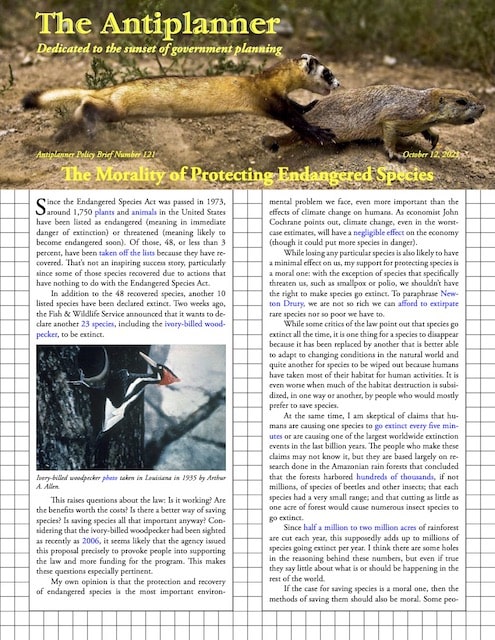Since the Endangered Species Act was passed in 1973, around 1,750 plants and animals in the United States have been listed as endangered (meaning in immediate danger of extinction) or threatened (meaning likely to become endangered soon). Of those, 48, or less than 3 percent, have been taken off the lists because they have recovered. That’s not an inspiring success story, particularly since some of those species recovered due to actions that have nothing to do with the Endangered Species Act.
 Click image to download a five-page PDF of this policy brief.
Click image to download a five-page PDF of this policy brief.
In addition to the 48 recovered species, another 10 listed species have been declared extinct. Two weeks ago, the Fish & Wildlife Service announced that it wants to declare another 23 species, including the ivory-billed woodpecker, to be extinct. Continue reading








